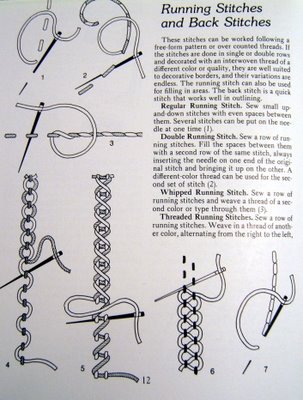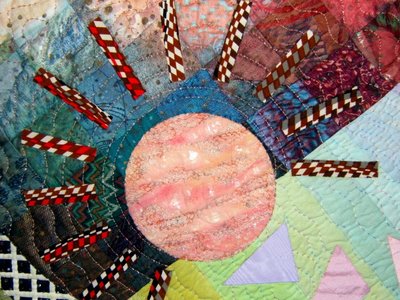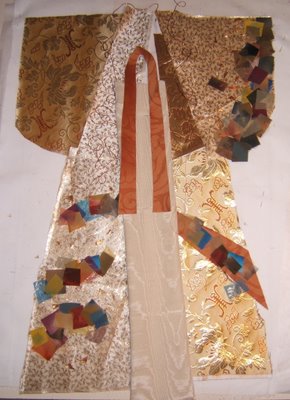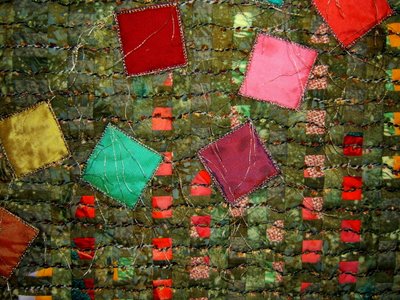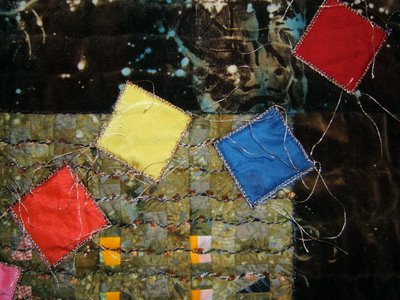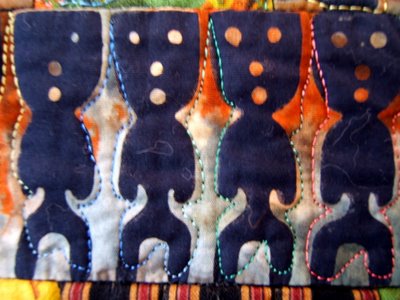 The technique I've come up with is:
The technique I've come up with is:- Lay down a backing fabric wrong side up
- Lay batting over backing fabric
- Layer a background right side up on top. Spray a light coat of adhesive onto the background fabric. I use Sulky's KK2000 Temporary Spray Adhesive because it disappears within a few days.
- Cut out and arrange the elements of the design.
- Top it off with a layer of tulle to capture and hold all those loose pieces. I audition various colors of tulle by trapping the lower edge of the tulle against the table top with my body. I lower the tulle over the piece making sure there is no contact, because the loose pieces in the composition are easily "picked up" or disturbed by any direct contact in spite of the adhesive. Each color gives a different feel, or mood, to the piece.
- Cut the tulle netting slightly larger than the piece. Spray the "under side" with the Sulky adhesive. Layer the tulle over the finished composition.
- Pin baste all the layers together.
- Machine quilt the piece. Begin by stitching around the outside perimeters and get a few major lines across the piece so you can remove most of the pins. Complete the desired quilting pattern(s).
 Embellish the surface with couched yarns or threads. Also, oil stick pastels, crayons, or paint can be applied over the tulle to emphasize (or mask) design lines or areas. The cats whiskers and highlights on the glass bowl are made with pastels. There are two layers of tulle (one that is white) in the area of the water.
Embellish the surface with couched yarns or threads. Also, oil stick pastels, crayons, or paint can be applied over the tulle to emphasize (or mask) design lines or areas. The cats whiskers and highlights on the glass bowl are made with pastels. There are two layers of tulle (one that is white) in the area of the water.This collage technique executes design ideas rather quickly because all the raw edges are confined under the tulle. Also, it's a lot easier to play with and place (or remove) all the elements within a composition because nothing is stitched down. It's fun!



